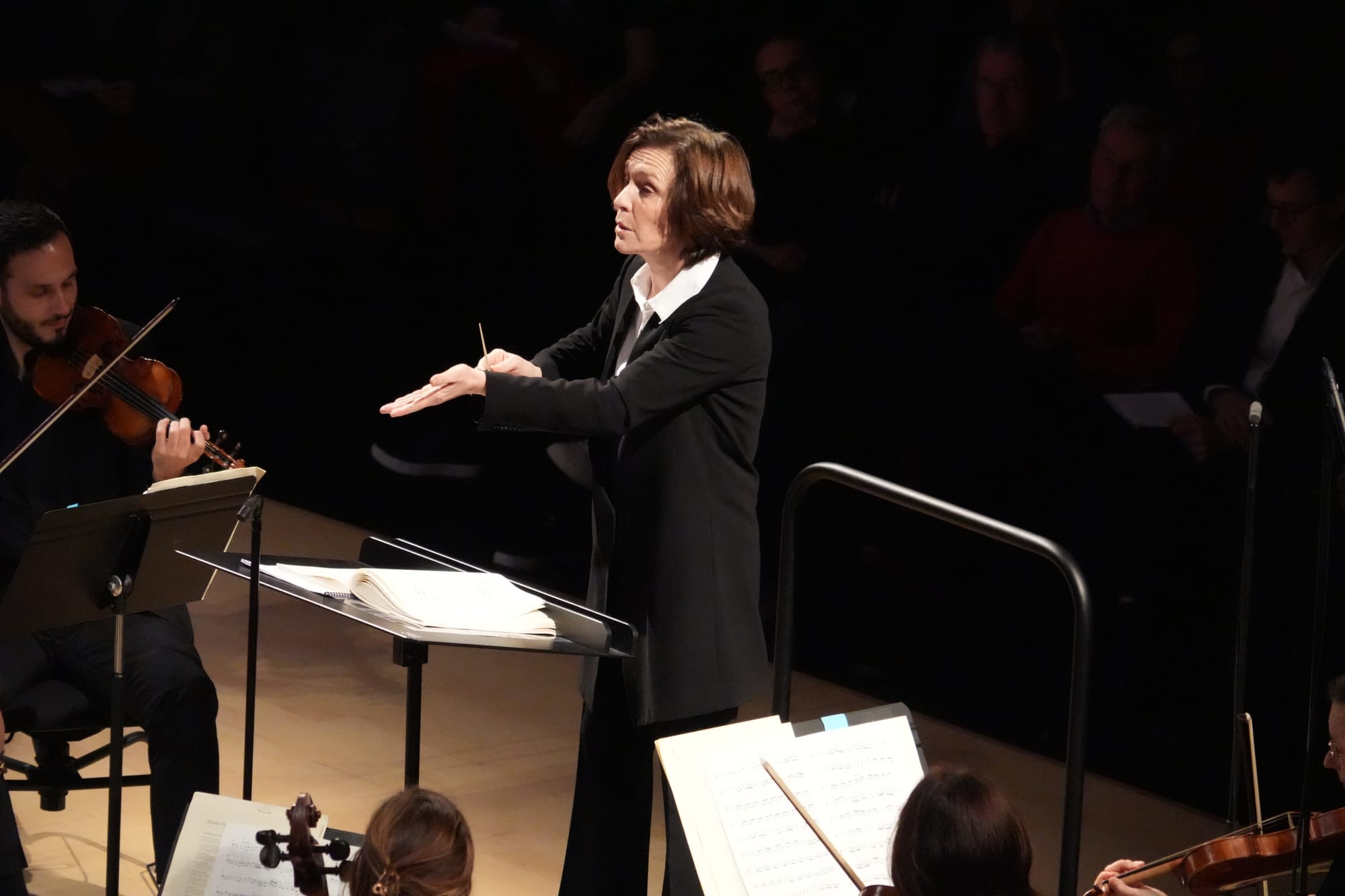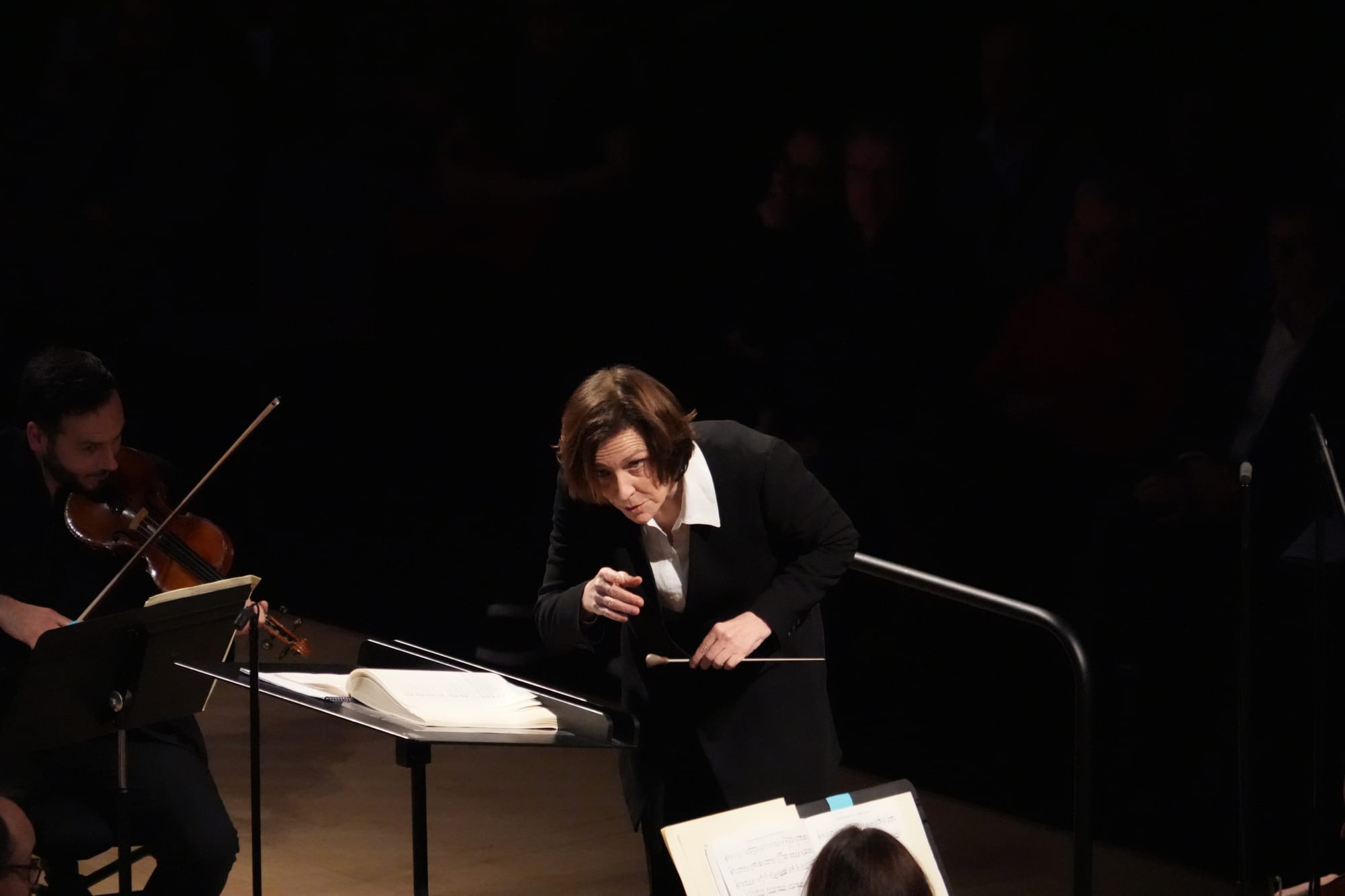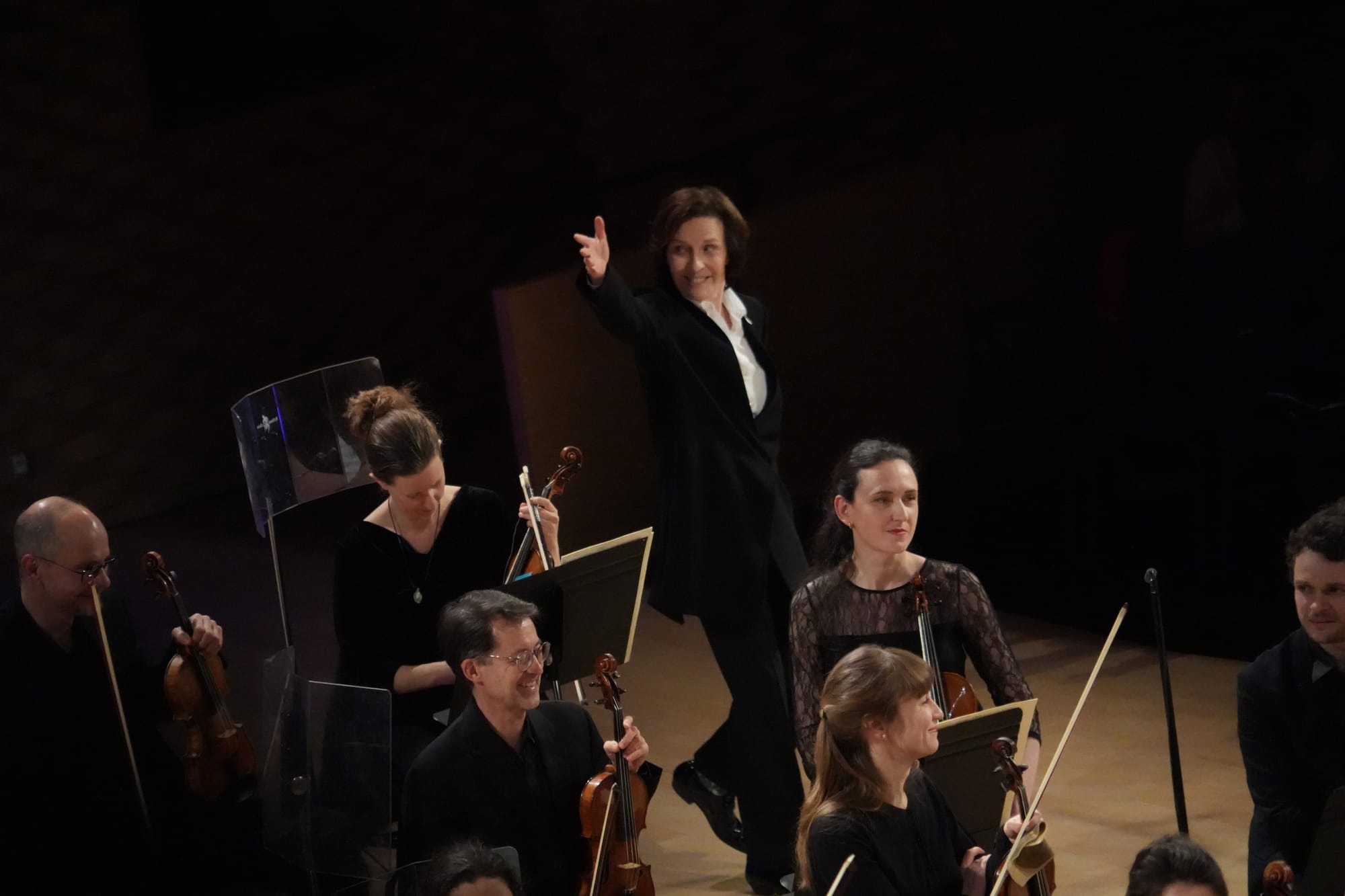Insula impresses again: in a symphony by Emilie Mayer

Schubert, Mayer Insula Orchestra / Laurence Equilbey. La Seine Musicale, Paris, 27.02.2024
Schubert Overture, Des Teufels Lustschloß, D 84 (1813/14)
Symphony No. 4 in C minor, D 417, ‘Tragic’ (1816)
Emilie Mayer Symphony No. 1 in C minor (1847)
Insula Orchestra programmes are always stimulating. No extra elements this time (in the manner of a film for the Faure Requiem or their extraordinary Mozart Requiem realisation); but a major discovery for many, surely, in the music of Emilie Mayer, and a lesser-known opera overture by Schubert (Des Teufels Lustscholoß or, as it was rendered in French, Le Pavillon du Diable).
Schubert operas rarely get a staging, with the (near) exception of Fierrabras (championed, notably, by Claiudio Abbado). Dating from 1814/14, Des Teufels Lustschloß is a three act opera. The piece as only heard (n concert format) in 1879 and had to wait until 1979 for a full staging. The marking is Allegro con fuoco, and Equilbey certainly inspired Insula to great heights. The orchestra layout was interesting, with double-basses mostly behind the first violins, grounding the overall orchestral sound and keeping pitch intact. The use of timpani is notable, but so was the pure lyricism of the contrasting themes, deliciously phrased by Insula’s woodwinds with a real sense of cantabile in its true sense: a sense of vocal line ‘spoken’ through an instrument. A passage for three trombones (representative, perhaps, of the mysteries of magic?) was noteworthy, performed with beautiful tone and a real awareness of the counterpoint at work. Moments seen to veer towards the Weber of Freischütz (a piece Insula has successfully championed); others are pure Schubert, while some moments perhaps steer the listener in the direction of Beethoven. A fascinating, short (about eight or nine) minutes.

Safely ensconced within a symphonic framework, the music of Schubert’s Fourth Symphony explores the deeper regions of the soul. Inexplicably one of the most underplayed of Schubert’s symphonies (like the Sixth, almost ignored, in fact), it is a powerful work. There are fine recorded performances (Harnoncourt, Abbado …) but never have I heard an account as convincing as this. From the slowly-unfurling counterpoint of the opening Adagio molto to the punchy Allegro vivace that follows, this was the perfect reading. Good to have the exposition repeat, then; itself a symptom of Equilbey’s faultless structural awareness, impeccably realised by the players of her orchestra.
Has there ever been a more perfectly paced slow movement of this symphony than here at La Seine Musicale? Equilbey’s pace was the very epitome of the prescribed Andante, flowing, pure, the result often delightful. The oboe solos of Jean-Marc Philippe were particularly notewrothy. Yes, there was contrast, but this performance was effectively shot through with grace.
Schubert marks his third movement ‘Menuetto,’ but it is really a Scherzo, with its acidic accents that simply fizz. It is also rhythmically complex, and Insula revelled in the play (as should we, the audience). The woodwind-drenched Trio was a proper dance, lilting, an instant transport to the Austro-German countryside. No unnecessarily loitering here (Harnoncourt does, in his recording with the Berliner Philharmlmiker – relevant as Equilbey studied with him). A bustling C-Minor exuded from the finale’s opening, almost like an operatic overture (a deliberate link to D 84, I wonder?). The sound of the authentic clarinet Vincenzo Casale) added a remarkable, warm timbre to the unfolding drama (lovely clarinet/violin dialogues, too). Silences really spoke; this was high-voltage Schubert under the baton of a natural Schubertian. Fabulous.
Post-interval, a performance of a symphony by Emilie Mayer (1812-83). A student of composer Carl Loewe in Stetlin (now Szozecin, Poland), both of her first two symphonies (of eight) were premiered there in 1848 (before Macrh 4 is all we know): this one, and the E-Minor. The C-Minor, No. 1, is a remarkable piece. Like any good piece in C-Minor, it includes a funeral march: here, the first movement Adagio opening; the ensuing Allegro energico is full of power and, in this performance, full of urgency. Woodwind staccato was particularly effective, as was the realisation of Mayer’s every intention(including a lovely way of building up chords note by note superposition). A taut development (from both composer and present orchestra) contained plenty of thunder.
This time the symphony boasts a true Adagio (as opposed to Schubert’s Andante), and the difference was properly marked. Interruptive horns (with a fast anacrusic gesture) balanced a decorated version of the main theme on strings that was heart-meltingly beautiful. Equilbey took the Allegro vivace at a cracking pace, to fine effect. This was very much allegro molto, and the drama was palpable. Perhaps the return to the opening of the movement after the Trio could have been a touch tighter, but what was miraculous about this performance is that, despite the music’s velocity, Equilbey never lost sight of the spirit of the dance. The finale is wide-ranging dramatically, opening with a dark pedal note underpinning an upper string ‘sigh’. Here it was the constrained energy of the quieter passages that was so impressive; the fortes and fortissimos appeared as explosions of just those quieter moments. Equilbey controls the music’s contours so well, never losing sight of the overall picture. Rarely if ever could Emilie Mayer have had such a fervent advocate as this. Inevitably perhaps a touch of Farrenc formed the encore, but it is the Mayer, above the Schubert, that remains blisteringly burned into the memory. An unforgettable experience.

This performance continues the good work of Insula and Equilbey in championing Romantic female composers (the recordings of Farrenc are universally praised, and rightly so). Good news then that there are plans afoot for a recording of this Mayer symphony, along with the Piano Concerto (with David Fray) on Warner/Erato.
All photos © Daria Moudrolioubova.
